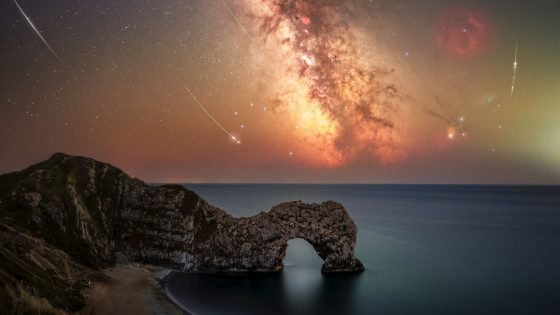The Perseid meteor shower peaked on August 12–13, 2025, captivating stargazers worldwide with its dazzling display of shooting stars. This annual event occurs as Earth passes through the debris trail of comet 109P/Swift-Tuttle, creating a breathtaking spectacle in the night sky.
- Perseid meteor shower peaked on Aug 12-13.
- Earth passes through comet 109P/Swift-Tuttle debris.
- Bright meteors outshone the moonlight.
- Photographers captured stunning meteor images worldwide.
- Perseids remain active until August 23.
- Tips available for photographing meteor showers.
Despite the interference from a waning gibbous moon, the Perseids still delivered a remarkable show, with many bright meteors visible. As Earth navigated the densest part of the comet’s trail, observers were treated to numerous meteors burning up upon atmospheric entry, leaving behind stunning visuals.
This year’s Perseid meteor shower raises intriguing questions about the impact of lunar cycles on meteor visibility. How often do moon phases affect our ability to observe celestial events? The interplay between lunar brightness and meteor visibility is significant, as seen in this year’s display.
- The Perseids typically produce 50 to 100 meteors per hour at peak.
- Moonlight can significantly diminish visibility, affecting stargazing experiences.
- Photographers captured stunning images of meteors against various backdrops, including auroras.
As we look ahead, the Perseids remind US of the beauty and wonder of our universe, encouraging ongoing exploration and appreciation of celestial phenomena.

































